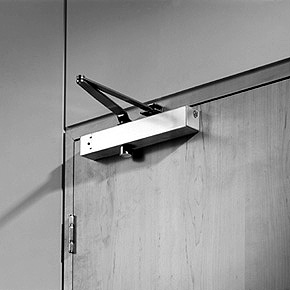Doors
Heat losses through doors can be prevented by draught sealing and also by thermal insulation. The potential heat loss due to air infiltration is however far higher than that due to poor thermal insulation.External classroom doors are frequently used by the children in early years education where the children spend a lot of time outside. Due to space restrictions it is not always possible to lobby a classroom door opening directly to outside. One way of economising on space is to make the lobby serve another function such as a cloakroom or corridor to a toilet area. For less frequently used external classroom doors, eg for older children, or where space is restricted a sliding door may be appropriate. These may require fitting with heated air curtains which also prevent the ingress of cold air.Both the weather tightness and the sound insulation of doorsets requires the use of perimeter seals. The choice of door seals should consider the frequency of use of the door.

|

  
|
|
The specification of door widths needs to take into account the needs of wheelchair users. The maximum acceptable opening pressure is limited by the strength of pupils of different ages and also the requirement for a wheelchair user to be able to open the doors. Generally the opening force required to open the door is governed by the type of seals applied to a door, the weight/width of the door, the power of the door closer if fitted, the friction in the hinges, the resistance introduced by any seals and the airtightness of the room into which the door is opening.Door closing devices on external doors can be a problem in that they make doors harder to open. Therefore, whilst door closers are a low cost energy saving option they need to be used with care.Keep windows and doors shut when heating is on. Look to see if draught seals are intact each term as part of energy efficiency walk around.
|